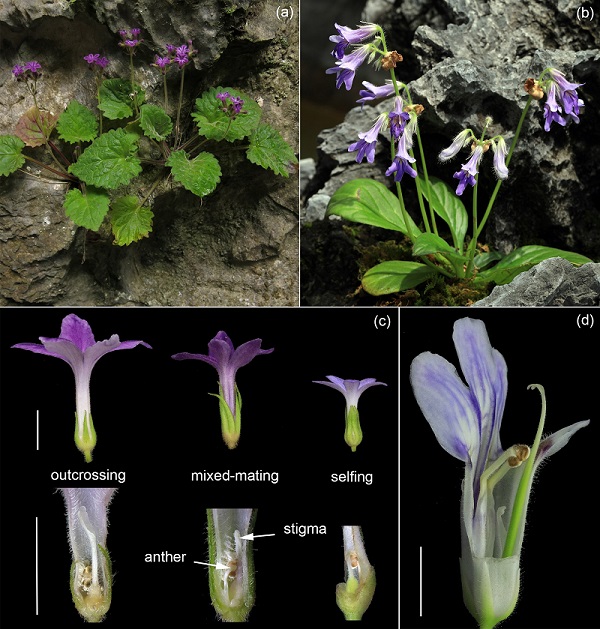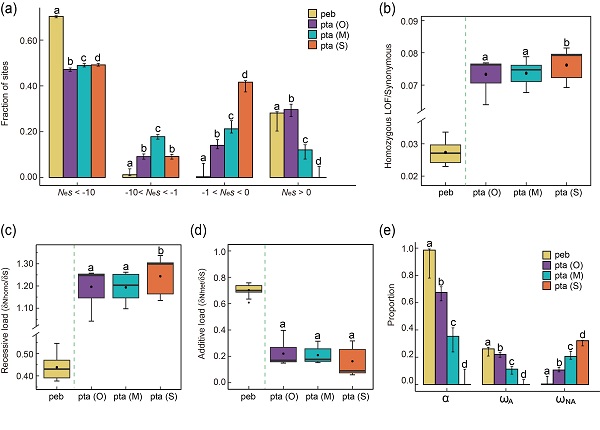

The evolution of selfing from outcrossing has occurred frequently and has been recognized as one of the most common evolutionary transitions in flowering plants. Shifts to selfing from outcrossing are expected to produce a series of predictable genomic changes, but empirical evidence of genome selfing syndrome is very few explored.
The genus Primulina is a speciose group belonging to the African violet family Gesnereacea. Primulina tabacum and P. eburnea are a closely related species pair with contrasting mating systems, and both species are endemic to karst areas in southern China. Primulina eburnea is outcrossing with widespread distribution, whereas P. tabacum is narrow distributed with strong intra-species population structure as well as variations of selfing rates. These two species provide an excellent system to investigate the genomic consequences of mating system transitions at the inter- and intra-species levels.
A research group led by Prof. Ming Kang from South China Botanical Garden, Chinese Academy of Science, comprehensively investigated the genomic consequences of mating system shifts in Primulina using high-quality genome assembly and whole-genome resequencing data. They found that highly selfing populations of P. tabacum display loss of genetic diversity, increased deleterious mutations, higher genomic burden and fewer adaptive substitutions. However, compared with outcrossing populations, mixed- mating populations did not display loss of genetic diversity and accumulation of genetic load. No severe bottlenecks signals were detected associated with transition from outcrossing to highly selfing, indicating that the genetic effects of selfing on Ne and possibly linked selection, rather than demographic history, are the primary drivers of diversity reduction in highly selfing populations. Their research provide a comprehensive empirical study for genomic consequences of mating systems transition in plants, and highlight the importance of distinguishing the relative contribution of mating system and demography on the genomic consequences associated with mating system evolution.
The research article, entitled “Genomic insights into inter- and intraspecific mating system shifts in Primulina”, was published online in Molecular Ecology.



